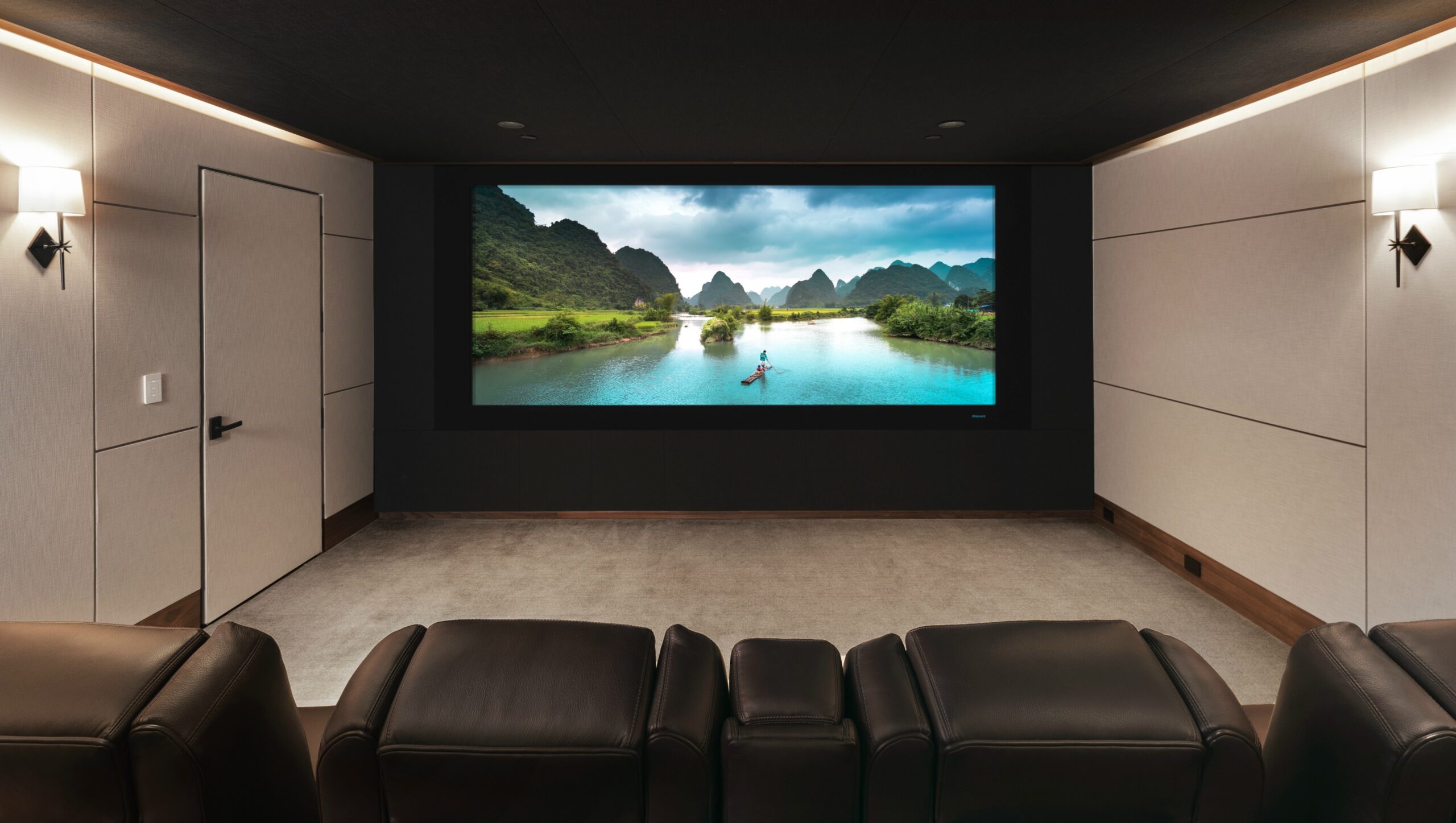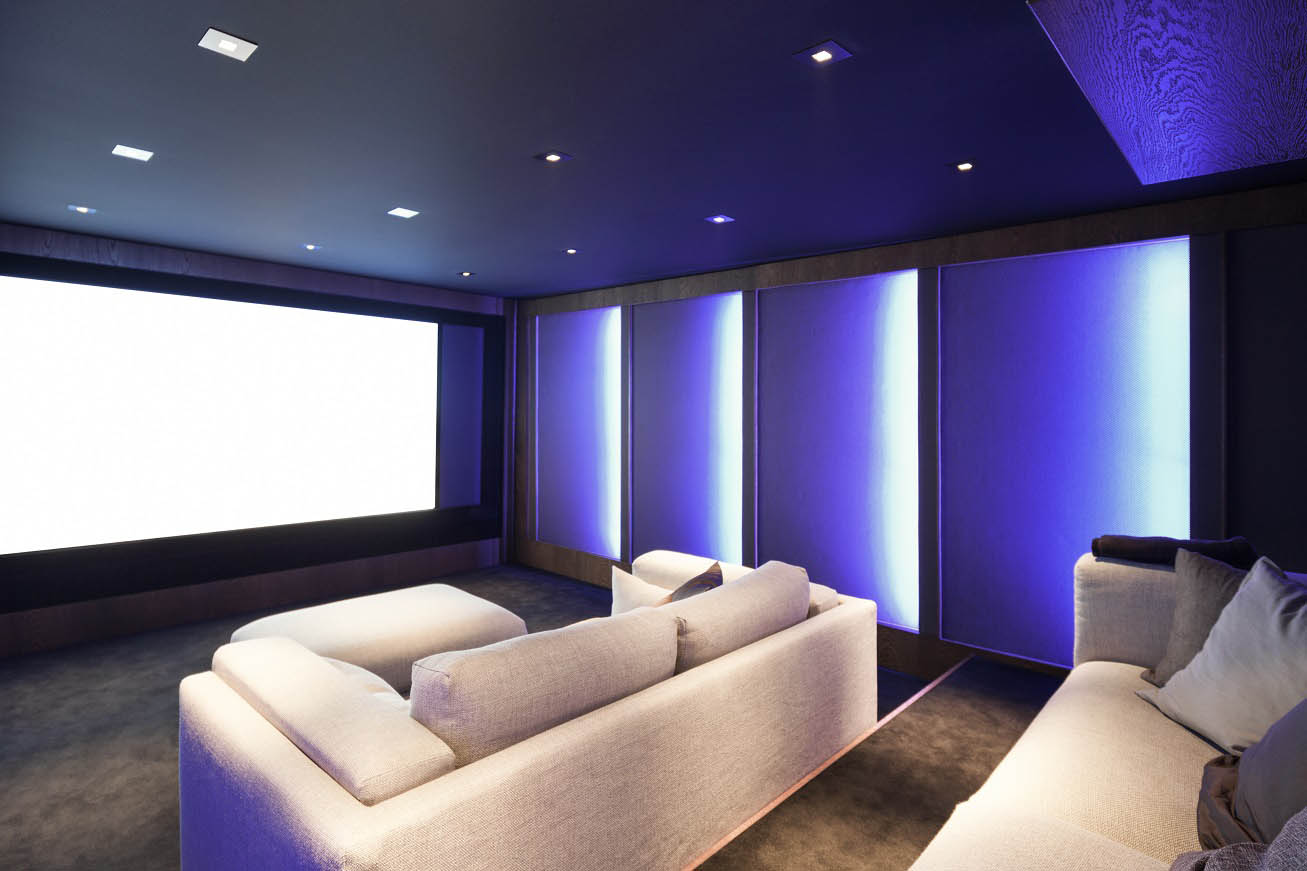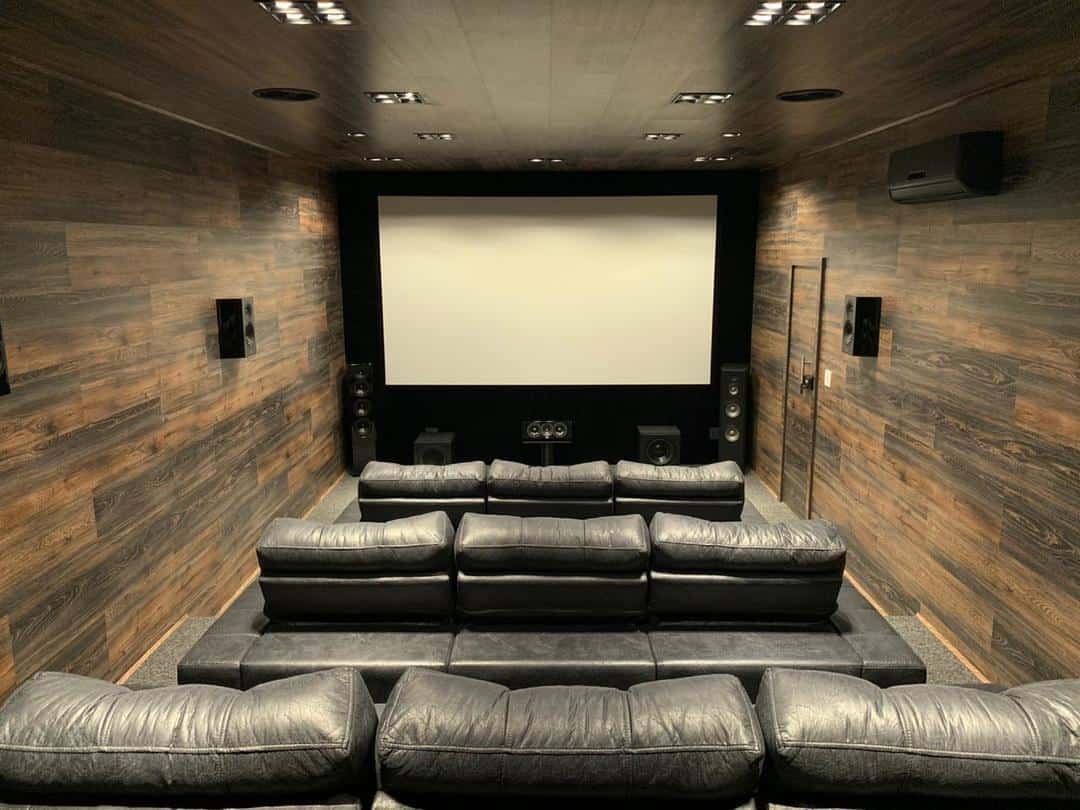Home Theater 101: Everything You Need to Know for a Motion Picture Experience in your home
Producing a home movie theater that measures up to the motion picture experience of a business theatre includes mindful factor to consider of numerous parts, including screen selection, audio systems, and space format. Whether you are contemplating the optimal display dimension or the details of surround audio, comprehending these fundamentals is necessary.
Choosing the Right Screen
When establishing up a home movie theater, selecting the best display can make or damage the checking out experience - tampa home theater installation. The display serves as the centerpiece of your arrangement, influencing image quality, viewing angles, and general aesthetic. Secret aspects to consider consist of screen type, size, and resolution
First, identify the suitable screen dimension based on your area measurements and seating distance. A general guideline is to rest approximately 1.5 to 2.5 times the diagonal display size for optimum viewing. Next, select in between numerous display types, such as fixed-frame, motorized, or retracting screens, each offering distinct advantages. Fixed-frame screens commonly supply the most effective photo top quality, while motorized alternatives permit flexibility in area use.
Resolution is one more crucial variable. For a truly immersive experience, take into consideration a screen made for 4K or also 8K web content, making certain intensity and clarity. Furthermore, take into consideration the screen's gain, which influences brightness and comparison; a greater gain can improve illumination in well-lit spaces, while a reduced gain might be preferable for darker atmospheres.
Picking Audio Equipment
Audio tools is an important part of any home movie theater system, significantly boosting the general watching experience. The selection of audio equipment can identify the deepness, clearness, and immersion of audio, important for developing a motion picture ambience.
When selecting audio tools, consider a border stereo, which normally consists of a receiver, multiple audio speakers, and a subwoofer. A 5.1 or 7.1 network system is recommended, where the first number stands for the speakers and the second the speaker, giving an immersive soundscape. The receiver is the heart of the system, handling sound and video clip signals, and must sustain modern styles like Dolby Atmos for an improved spatial experience.
Quality speakers are vital; search for models that provide a balanced audio account with excellent bass action. Floor-standing audio speakers can generate richer sound, while bookshelf alternatives conserve area. In addition, take into consideration cordless alternatives for convenience of setup, although wired systems often deliver superior efficiency.

Optimal Seating Plans
Developing a suitable home cinema experience pivots substantially on optimum seating arrangements. The setup of seats plays an important function in both convenience and viewing top quality, straight influencing the general motion picture experience.
First, consider the screen size and seeing distance. A typical standard is to place seats at a distance approximately 1.5 to 2.5 times the diagonal size of the screen. This makes certain an immersive experience without stressing the eyes.
Next, elevation is essential. The back rows need to be higher than the front to avoid blockages if your seating is in a tiered style. For flat seating, make sure that the front row is not as well near to the screen, and that everybody has a clear view.
Moreover, think about the setup hop over to these guys in terms of social characteristics. Group seats can enhance the common experience, while private seats may be liked for individual viewing.

Lastly, prioritize convenience with ergonomic seating that supports prolonged watching durations. Integrating recliner chairs or supported seats can dramatically improve the experience, making the home theater a preferred location for both entertainment and relaxation.
Lighting and Ambiance
Efficient illumination and atmosphere are vital parts of a properly designed home cinema, as they dramatically affect the checking out experience. The best illumination can boost the motion picture feel, while inadequate selections can interfere with it. For optimal outcomes, take into consideration a layered lights technique that includes ambient, job, and accent lighting.
Ambient lights supplies basic lighting, making sure that the room is not entirely dark, which can stress the eyes. Dimmer switches are very advised, enabling adjustments based on the web content being viewed. Job illumination, such as wall surface sconces or floor lamps, uses useful illumination for activities like analysis or navigating the room without disrupting the overall ambience.
Accent lights can be utilized to highlight building attributes or create focal factors, including depth and interest to the area. LED strip lights behind displays or along shelves can provide a subtle glow that improves the aesthetic experience without frustrating the visitor.

Wiring and Installation Tips
A well-planned electrical wiring configuration is vital for accomplishing ideal efficiency in your home theater system. Appropriate electrical wiring not only makes certain top notch sound and video clip signals yet also improves the overall aesthetic of your room. Begin by mapping out your format, determining where each element will be put, including your screen, speakers, and receiver.
When picking cords, prioritize high-grade, suitably determined electrical wiring to reduce signal loss. HDMI cords need to be made use of for video links, while speaker cord should match the specs of your audio speakers and amplifier. Select in-wall rated cable televisions to adhere to security standards pop over here and keep a clean look.

Final Thought
In summary, creating an extraordinary home theater experience requires careful consideration of various components, including display option, audio devices, seating plans, lights, and electrical wiring. Each component plays a vital duty in accomplishing optimal performance and ambiance, inevitably enhancing the satisfaction of home amusement. By prioritizing these aspects, a motion picture environment can be effectively reproduced, enabling immersive checking out experiences that rival traditional theater setups. Attention to information in each location is essential for general complete satisfaction.
Creating a home cinema that matches the motion picture experience of a commercial theater entails careful consideration of numerous components, including display option, sound systems, and area layout.When setting up a home cinema, selecting the best screen can make or damage the viewing linked here experience. Next off, pick in between different display types, such as fixed-frame, motorized, or retracting screens, each offering distinct advantages. For an absolutely immersive experience, take into consideration a screen designed for 4K or even 8K material, making sure sharpness and clarity.In recap, developing an outstanding home movie theater experience requires mindful consideration of numerous elements, including display selection, audio equipment, seating arrangements, lights, and electrical wiring.